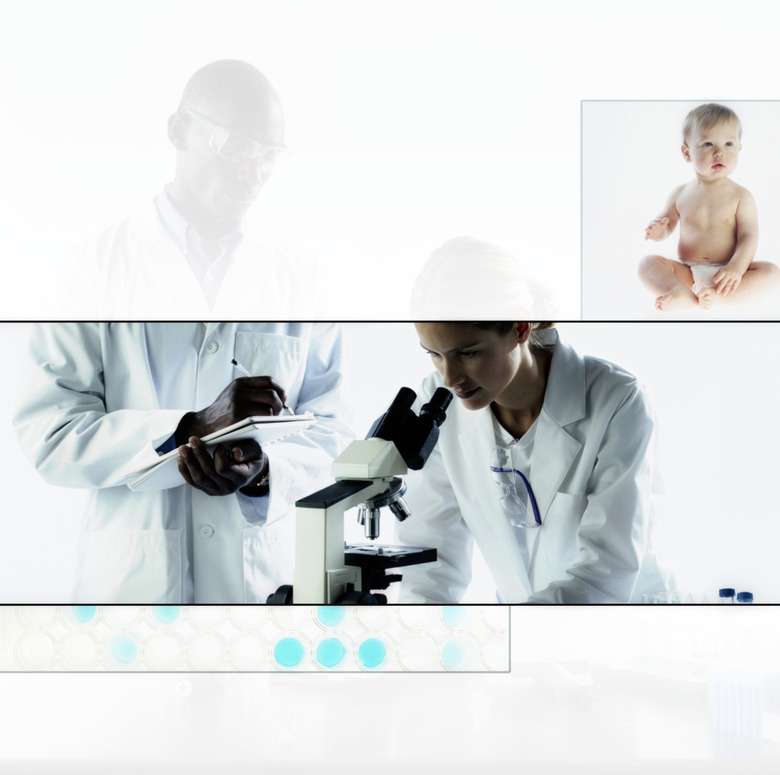Comparison Of Cloning To Mitosis
Geneticists define a clone as any organism that is genetically identical to another. Clones can be replicated in the lab, or can be a pair of identical twins naturally born, for example. As you can see, the definition of cloning covers a lot of territory, and part of that territory includes the process of mitosis. In fact, mitosis can be a form of cloning.
DNA and Cloning
DNA and Cloning
DNA, deoxyribonucleic acid, is the genetic material in nearly every organism on Earth. It's a long molecule that consists of four different nuclear bases assembled in a long chain. The sequence of bases in any particular string of DNA directs the assembly of an organism's proteins. If two organisms share an identical stretch of DNA, they'll make identical proteins. Proteins are responsible for an organism's shape, its color, the way it processes food — everything a cell does. So organisms that share DNA also share proteins, which means they'll also share the characteristics defined by those proteins.
Mitosis
Mitosis
Mitosis is a process of cell division. Biologists divide cell division into many stages, but there are three main elements: A cell's chromosome is duplicated (S-phase of interphase), the copies migrate to different ends of the cell (mitosis), and the cell splits down the middle (cytokinesis). The final result is two cells with identical DNA. Mitosis is the predominant form of reproduction among single-celled organisms, and this type of reproduction results in two genetically identical daughter cells. So every time a bacteria, for example, duplicates itself and forms two daughter cells through mitosis, it has cloned itself.
Single-Celled Organisms
Single-Celled Organisms
Most single-celled organisms can reproduce asexually. Through mitosis one parent cell splits into two daughter cells. This is commonly known as asexual reproduction, precisely because it does not involve the transfer of genetic information from one cell to another. It could equally well be known as cloning, because a population arising from the asexual reproduction of a single organism is all clones.
Other Types of Cloning
Other Types of Cloning
Perhaps the most common understanding of the word "cloning" applies to the idea of producing an entire multicellular organism that is genetically identical to its parent. This type of cloning can take place naturally, through a process known as parthenogenesis, or a new cloned organism can be created artificially. That is, it requires the transfer of genetic material from one type of cell to another, and then caring for the cell. Those cloning steps are completely distinct from mitosis. But after the genetic transfer, the normal process of mitosis works to build the organism from the single cloned cell.
Cite This Article
MLA
Gaughan, Richard. "Comparison Of Cloning To Mitosis" sciencing.com, https://www.sciencing.com/comparison-cloning-mitosis-20847/. 21 July 2017.
APA
Gaughan, Richard. (2017, July 21). Comparison Of Cloning To Mitosis. sciencing.com. Retrieved from https://www.sciencing.com/comparison-cloning-mitosis-20847/
Chicago
Gaughan, Richard. Comparison Of Cloning To Mitosis last modified August 30, 2022. https://www.sciencing.com/comparison-cloning-mitosis-20847/
